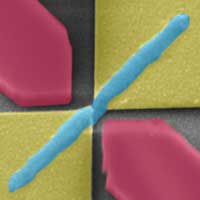 First-of-a-kind electro-optical device provides solution to faster and more energy efficient computing memories and processors.
First-of-a-kind electro-optical device provides solution to faster and more energy efficient computing memories and processors.
Friday, November 29, 2019
Electro-optical device provides solution to faster computing memories and processors
 First-of-a-kind electro-optical device provides solution to faster and more energy efficient computing memories and processors.
First-of-a-kind electro-optical device provides solution to faster and more energy efficient computing memories and processors.
Armored with plastic 'hair' and silica, new perovskite nanocrystals show more durability
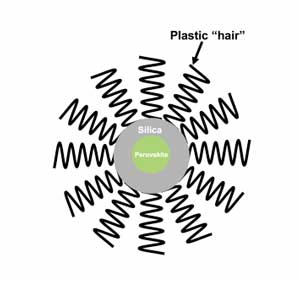 Researchers have demonstrated a novel approach aimed at addressing the material's durability problem: encasing the perovskite inside a double-layer protection system made from plastic and silica.
Researchers have demonstrated a novel approach aimed at addressing the material's durability problem: encasing the perovskite inside a double-layer protection system made from plastic and silica.
Researchers find potential solution to overheating mobile phones
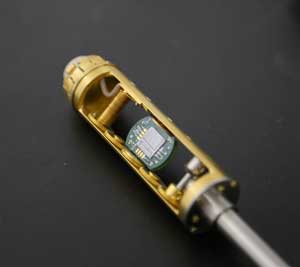 Researchers have developed a revolutionary way to encode computational information without using electrical current. As a global first, this could lead to faster technological devices that could efficiently use energy without overheating.
Researchers have developed a revolutionary way to encode computational information without using electrical current. As a global first, this could lead to faster technological devices that could efficiently use energy without overheating.
The coldest reaction
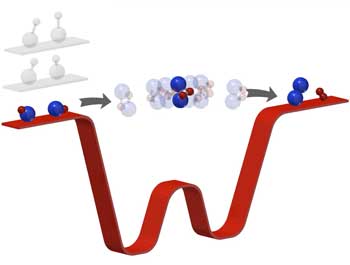 With ultracold chemistry, researchers get a first look at exactly what happens during a chemical reaction.
With ultracold chemistry, researchers get a first look at exactly what happens during a chemical reaction.
Toward more efficient computing, with magnetic waves
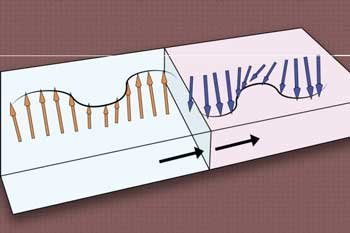 Circuit design offers a path to spintronic devices that use little electricity and generate practically no heat.
Circuit design offers a path to spintronic devices that use little electricity and generate practically no heat.
Stretchable, highly conductive film promising for wearable electronics
 Strong bonds between metal nanowires and polymer nanofibers enable a composite film to realize good electrical conductivity and high stretchability.
Strong bonds between metal nanowires and polymer nanofibers enable a composite film to realize good electrical conductivity and high stretchability.
Thursday, November 28, 2019
Smallest 3D stop-animation shot in a scanning electron microscope (w/video)
 A new microscopic film pushes the boundaries of stop motion cinematography by employing 3D figurines the size of a grain of dust.
A new microscopic film pushes the boundaries of stop motion cinematography by employing 3D figurines the size of a grain of dust.
Wednesday, November 27, 2019
Quantum dot lasers move a step closer with electric-pumping development
 have developed a way to make colloidal quantum dots produce laser light with the help of an electric field.
have developed a way to make colloidal quantum dots produce laser light with the help of an electric field.
Seeing the world's smallest universal joints
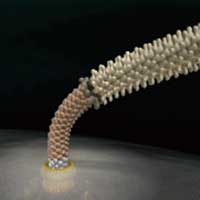 Researchers used electron cryomicroscopy to solve the structure of an essential component of the bacterial flagellum with unprecedented resolution, with important implications for new antibiotics and future nanobots.
Researchers used electron cryomicroscopy to solve the structure of an essential component of the bacterial flagellum with unprecedented resolution, with important implications for new antibiotics and future nanobots.
All the nanotubes are fit to print
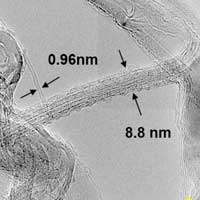 Chemists use newsprint for inexpensive bulk production of carbon nanotubes.
Chemists use newsprint for inexpensive bulk production of carbon nanotubes.
Black silicon can help detect explosives
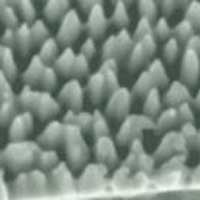 Researchers have developed an ultrasensitive detector based on black silicon. The device is able to detect trace amounts of nitroaromatic compounds and can be applied to identify the majority of explosives or highly toxic pollutants for medical and forensic evaluations.
Researchers have developed an ultrasensitive detector based on black silicon. The device is able to detect trace amounts of nitroaromatic compounds and can be applied to identify the majority of explosives or highly toxic pollutants for medical and forensic evaluations.
Scientists find new way to identify, manipulate topological metals for spintronics
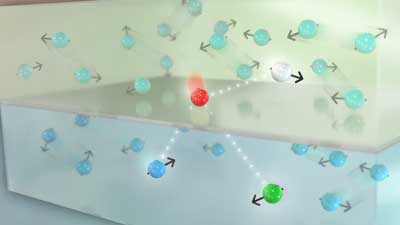 Scientists pioneer technique for working with topological materials.
Scientists pioneer technique for working with topological materials.
Atomic-scale manufacturing method could enable ultra-efficient computers
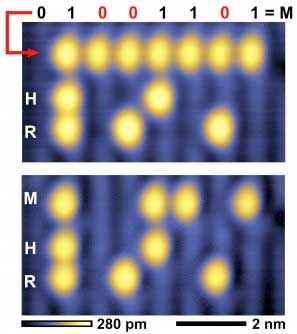 Researchers report a new manufacturing process that could enable ultra-efficient atomic computers that store more data and consume 100 times less power.
Researchers report a new manufacturing process that could enable ultra-efficient atomic computers that store more data and consume 100 times less power.
New study shows unique magnetic transitions in quasicrystal-like structures
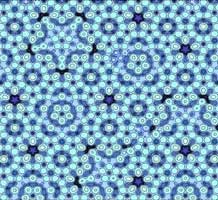 Scientists showed for the first time the presence of unique magnetic transitions in peculiar structures similar to quasicrystals.
Scientists showed for the first time the presence of unique magnetic transitions in peculiar structures similar to quasicrystals.
Molecular eraser enables better data storage and computers for AI
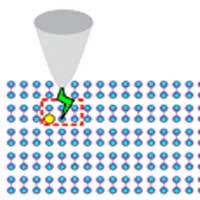 New discovery for atomic-scale circuits brings closer the potential to eliminate a gigatonne of carbon emissions while increasing data capacities for ultra-efficient computers.
New discovery for atomic-scale circuits brings closer the potential to eliminate a gigatonne of carbon emissions while increasing data capacities for ultra-efficient computers.
Cutting nanoparticles down to size
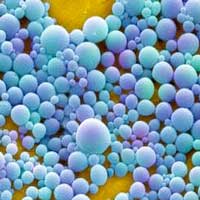 A new technique in chemistry could pave the way for producing uniform nanoparticles for use in drug delivery systems.
A new technique in chemistry could pave the way for producing uniform nanoparticles for use in drug delivery systems.
Water-soluble is better - Polymeric carbon nitride nanoparticles for highly efficient photocatalysis
 Scientists have succeeded for the first time in synthesizing colloidal nanoparticles of polymeric carbon nitride that are fully soluble in water and act as highly efficient and selective photocatalysts for light-driven chemical conversions.
Scientists have succeeded for the first time in synthesizing colloidal nanoparticles of polymeric carbon nitride that are fully soluble in water and act as highly efficient and selective photocatalysts for light-driven chemical conversions.
Tuesday, November 26, 2019
Theorem explains why quantities such as heat and power can fluctuate in microscopic system
 A theoretical study could have practical applications in nanoscale machine optimization.
A theoretical study could have practical applications in nanoscale machine optimization.
Pulsed electron beams provide a softer touch for atomic-scale imaging
 A new technique is providing atomic-resolution details about magnesium chloride, a material involved in the production of the most common plastic, polyethylene, and could help to create a path toward sustainable plastics.
A new technique is providing atomic-resolution details about magnesium chloride, a material involved in the production of the most common plastic, polyethylene, and could help to create a path toward sustainable plastics.
Hourglass-shaped silicon nanowire photodiodes with increased absorption of light developed
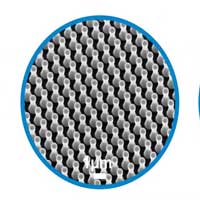 Scientists propose vertical silicone nanowires with high sensitivity by using silicone and semiconductor process.
Scientists propose vertical silicone nanowires with high sensitivity by using silicone and semiconductor process.
On your medicine's secret service
 Whether a wound heals well under a dressing cannot be seen from the outside. Researchers are now enabling a view through the bandage à la James Bond. The refined application of terahertz radiation could promote the analysis of multi-layered tissues for medical purposes and be used for wound treatment or the diagnostics of blood vessel plaques.
Whether a wound heals well under a dressing cannot be seen from the outside. Researchers are now enabling a view through the bandage à la James Bond. The refined application of terahertz radiation could promote the analysis of multi-layered tissues for medical purposes and be used for wound treatment or the diagnostics of blood vessel plaques.
Monday, November 25, 2019
Smart contrast agent for tumour visualisation
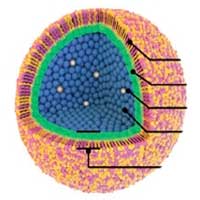 Chemists have developed a high performance contrast agent for magnetic resonance imaging (MRI) technology to improve cancer diagnosis.
Chemists have developed a high performance contrast agent for magnetic resonance imaging (MRI) technology to improve cancer diagnosis.
Self-assembling system uses magnets to mimic specific binding in DNA
 Researchers are using the binding power of magnets to design self-assembling systems that potentially can be created in nanoscale form.
Researchers are using the binding power of magnets to design self-assembling systems that potentially can be created in nanoscale form.
Ammonia synthesis made easy with 2D catalyst
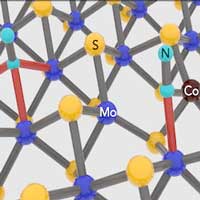 Researchers have developed an inorganic method to synthesize ammonia that is both environmentally friendly and can produce the valuable chemical on demand under ambient conditions.
Researchers have developed an inorganic method to synthesize ammonia that is both environmentally friendly and can produce the valuable chemical on demand under ambient conditions.
Structurally designed DNA star creates ultra-sensitive test for dengue virus
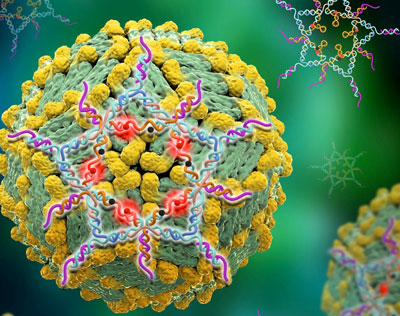 By folding snippets of DNA into the shape of a five-pointed star using structural DNA nanotechnology, researchers have created a trap that captures Dengue virus as it floats in the bloodstream. Once sprung, the trap - which is non-toxic and is naturally cleared from the body - lights up. It's the most sensitive test for the mosquito-borne diseases yet devised.
By folding snippets of DNA into the shape of a five-pointed star using structural DNA nanotechnology, researchers have created a trap that captures Dengue virus as it floats in the bloodstream. Once sprung, the trap - which is non-toxic and is naturally cleared from the body - lights up. It's the most sensitive test for the mosquito-borne diseases yet devised.
Powering future optical microsystems with chip-scale integrated photonics
 Program seeks to develop photonic integrated circuit platforms that incorporate on-chip optical gain for disruptive optical microsystems.
Program seeks to develop photonic integrated circuit platforms that incorporate on-chip optical gain for disruptive optical microsystems.
Clear, conductive coating could protect advanced solar cells, touch screens
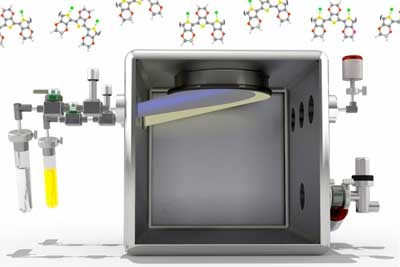 Researchers have improved on a transparent, conductive coating material, producing a tenfold gain in its electrical conductivity. When incorporated into a type of high-efficiency solar cell, the material increased the cell?s efficiency and stability.
Researchers have improved on a transparent, conductive coating material, producing a tenfold gain in its electrical conductivity. When incorporated into a type of high-efficiency solar cell, the material increased the cell?s efficiency and stability.
NanoEDGE: Nano-based wearable electronics for mental disorder diagnosis and functional restoration
 NanoEDGE is an interdisciplinary research project aiming at converging production techniques for functionalized electrodes with expertise in nanomaterial fabrication and characterization, state-of-the-art engineering, and neuroscience to pave the way for the production of multi-level sensors that can rigorously enhance the performance of established monitoring methods like electroencephalography (EEG) and electromyography (EMG).
NanoEDGE is an interdisciplinary research project aiming at converging production techniques for functionalized electrodes with expertise in nanomaterial fabrication and characterization, state-of-the-art engineering, and neuroscience to pave the way for the production of multi-level sensors that can rigorously enhance the performance of established monitoring methods like electroencephalography (EEG) and electromyography (EMG).
Nanotechnology could provide the breakthrough for pre-eclampsia which kills 500,000 babies each year
 New funding will allow bioengineers to better understand and tackle a condition which kills 76,000 women and 500,000 babies each year.
New funding will allow bioengineers to better understand and tackle a condition which kills 76,000 women and 500,000 babies each year.
Scratching the surface of perovskites
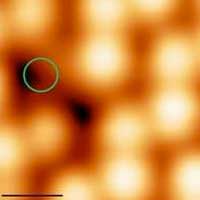 Researchers have, for the first time, characterized the structural defects that prompt the movement of ions, destabilizing the perovskite materials. These findings may inform future engineering approaches to optimize perovskite solar cells.
Researchers have, for the first time, characterized the structural defects that prompt the movement of ions, destabilizing the perovskite materials. These findings may inform future engineering approaches to optimize perovskite solar cells.
Saturday, November 23, 2019
Metal-organic framework captures and converts toxic air pollutant into industrial chemical
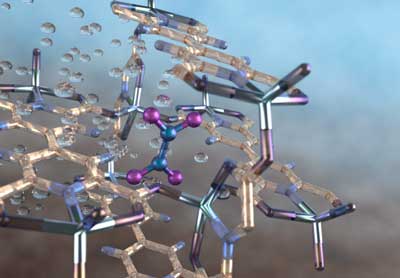 Metal-organic framework material material requires only water and air to convert captured nitrogen dioxide gas into nitric acid for industrial use.
Metal-organic framework material material requires only water and air to convert captured nitrogen dioxide gas into nitric acid for industrial use.
Friday, November 22, 2019
Old newspapers can be used to grow carbon nanotubes
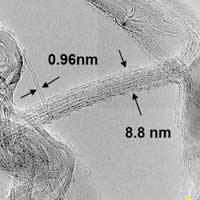 New research has found that old newspaper provide a cheap and green solution for the bulk production of single walled carbon nanotubes.
New research has found that old newspaper provide a cheap and green solution for the bulk production of single walled carbon nanotubes.
Scientists reveal the dominant role of quenched disorder on complex oxide nanowires
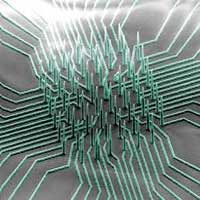 At nanometer length scale, novel phenomena are expected to emerge. Compared to the traditional semiconductors used in industrial business, does complex oxides show any interesting and not-before-seen properties at nanometer length scale? A new study has shown the unique physical properties of manganite nanowires known as quenched disorder and its potential applications.
At nanometer length scale, novel phenomena are expected to emerge. Compared to the traditional semiconductors used in industrial business, does complex oxides show any interesting and not-before-seen properties at nanometer length scale? A new study has shown the unique physical properties of manganite nanowires known as quenched disorder and its potential applications.
New method for using spin waves in magnetic materials
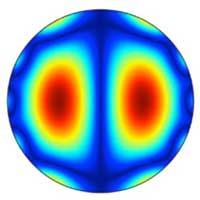 In order to miniaturize individual components of mobile phones or computers, for example, magnetic waves are currently regarded as promising alternatives to conventional data transmission functioning by means of electric currents. The physical basis for this is the spin of electrons in magnetic materials, which can be simplified as a rotation of electrons around their own axis. Physicists have developed a new approach that makes it easier to use spin waves.
In order to miniaturize individual components of mobile phones or computers, for example, magnetic waves are currently regarded as promising alternatives to conventional data transmission functioning by means of electric currents. The physical basis for this is the spin of electrons in magnetic materials, which can be simplified as a rotation of electrons around their own axis. Physicists have developed a new approach that makes it easier to use spin waves.
T-shirt generates electricity from temperature difference between body and surroundings
 This ee-textile prototype uses sustainable and low-cost materials like tomato skin.
This ee-textile prototype uses sustainable and low-cost materials like tomato skin.
Industrial scale production of layer 2D materials via intermediate-assisted grinding
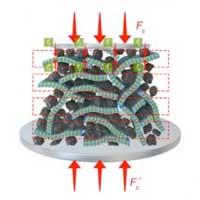 The key to a novel exfoliation technology is to use intermediate materials that increase the coefficient of friction of the mixture and effectively apply sliding frictional forces to the layer material, resulting in a dramatically increased exfoliation efficiency.
The key to a novel exfoliation technology is to use intermediate materials that increase the coefficient of friction of the mixture and effectively apply sliding frictional forces to the layer material, resulting in a dramatically increased exfoliation efficiency.
A 'simulation booster' for nanoelectronics
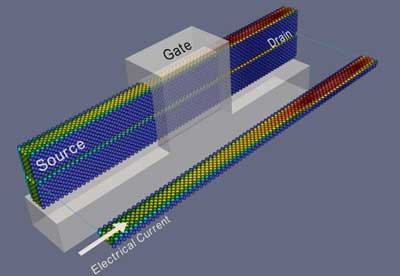 Researchers have developed a method that can simulate nanoelectronics devices and their properties realistically, quickly and efficiently. This offers a ray of hope for the industry and data centre operators alike, both of which are struggling with the (over)heating that comes with increasingly small and powerful transistors.
Researchers have developed a method that can simulate nanoelectronics devices and their properties realistically, quickly and efficiently. This offers a ray of hope for the industry and data centre operators alike, both of which are struggling with the (over)heating that comes with increasingly small and powerful transistors.
Graphene mapping in minutes instead of hours
 Researchers have developed an algorithm-induced high speed and non-invasive confocal Raman imaging of two-dimensional materials.
Researchers have developed an algorithm-induced high speed and non-invasive confocal Raman imaging of two-dimensional materials.
Thursday, November 21, 2019
Carbon nanotube project may improve military communications by boosting 5G technology
 Carbon nanotube technology may boost 5G and mm-wave technologies, improving military communications and sensing equipment.
Carbon nanotube technology may boost 5G and mm-wave technologies, improving military communications and sensing equipment.
Breaking (and restoring) graphene's symmetry in a twistable electronics device
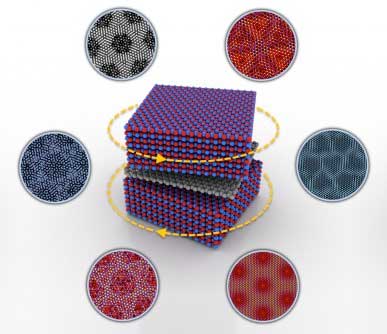 Researchers invent a new way to tune the properties of 2D materials by adjusting the twist angle between them; technology enables the development of nanoelectromechanical sensors with applications in astronomy, medicine, search and rescue, and more.
Researchers invent a new way to tune the properties of 2D materials by adjusting the twist angle between them; technology enables the development of nanoelectromechanical sensors with applications in astronomy, medicine, search and rescue, and more.
Big plans to save the planet depend on nanomaterials improving energy storage
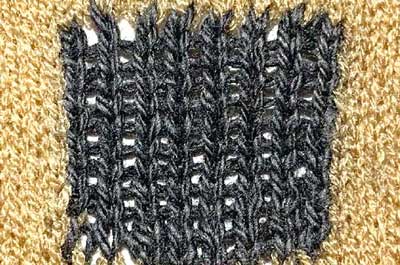 A new report lays out how research in the field of nanomaterials for energy storage over the last two decades has enabled the big step that will be necessary to make use of sustainable energy sources.
A new report lays out how research in the field of nanomaterials for energy storage over the last two decades has enabled the big step that will be necessary to make use of sustainable energy sources.
Magnetic wave flows under better control from now on
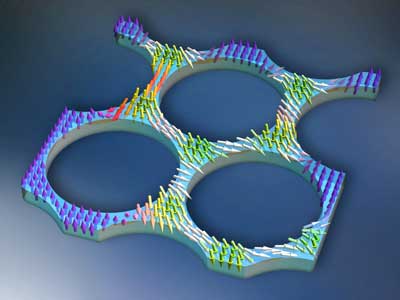 Even faster processors with even smaller dimensions? Wherever neither electronics nor spintronics can cope with performance or miniaturization, magnonics comes to the rescue. But before that happens, scientists must learn how to accurately simulate the flow of magnetic waves through magnonic crystals.
Even faster processors with even smaller dimensions? Wherever neither electronics nor spintronics can cope with performance or miniaturization, magnonics comes to the rescue. But before that happens, scientists must learn how to accurately simulate the flow of magnetic waves through magnonic crystals.
A review of single molecule-based electronic devices
 The authors of this review provide an overview of single molecule electronic devices, including molecular electronic devices and electrode types. Future challenges to the development of electronic devices based on single molecules are described, in the hopes of attracting more experts from different fields to participate in this research.
The authors of this review provide an overview of single molecule electronic devices, including molecular electronic devices and electrode types. Future challenges to the development of electronic devices based on single molecules are described, in the hopes of attracting more experts from different fields to participate in this research.
Graphene-based nanoplatforms for chemotherapy
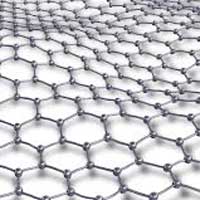 In a review paper, scientists systematically discuss the recent progresses, current challenges and future perspectives of smart graphene-based nanoplatforms for synergistic tumor therapy and bio-imaging.
In a review paper, scientists systematically discuss the recent progresses, current challenges and future perspectives of smart graphene-based nanoplatforms for synergistic tumor therapy and bio-imaging.
Researchers find a glitch in methods used to synthesize graphene and other 2D materials
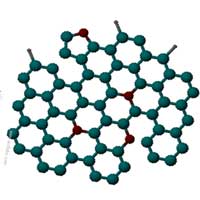 Scientists have stumbled upon an unexpected phenomenon that would have significant implications on the existing protocols followed to synthesize graphene and other two dimensional (2D) nanomaterials.
Scientists have stumbled upon an unexpected phenomenon that would have significant implications on the existing protocols followed to synthesize graphene and other two dimensional (2D) nanomaterials.
Wednesday, November 20, 2019
The beauty of imperfections: Linking atomic defects to 2D materials' electronic properties
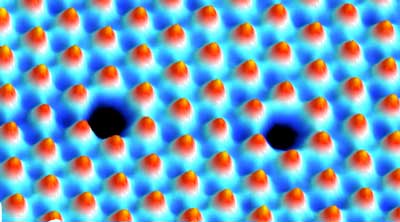 Scientists reveal oxygen's hidden talent for filling in atomic gaps in TMDs; and the surprising role of electron spin in conductivity.
Scientists reveal oxygen's hidden talent for filling in atomic gaps in TMDs; and the surprising role of electron spin in conductivity.
Turning up the heat to create new nanostructured metals
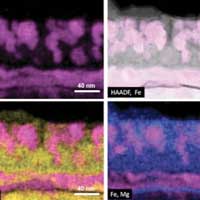 Scientists used heat to drive a spontaneous process in which different metals mixed to form 3-D interlocking nanostructures in thin films, with applications for catalysts, solar cells, and biomedical sensors.
Scientists used heat to drive a spontaneous process in which different metals mixed to form 3-D interlocking nanostructures in thin films, with applications for catalysts, solar cells, and biomedical sensors.
4D imaging with liquid crystal microlenses
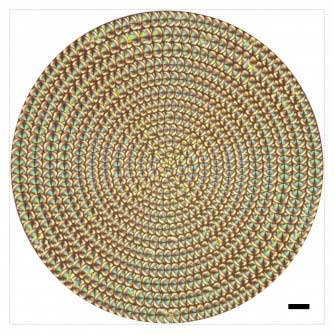 Researchers have developed self-assembling liquid crystal microlenses that can reveal 4D information in one snapshot.
Researchers have developed self-assembling liquid crystal microlenses that can reveal 4D information in one snapshot.
Making tiny antennas for wearable electronics
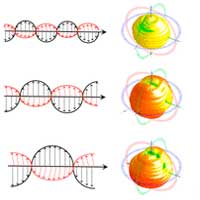 Researchers have made the tiniest radio-frequency antennas reported yet, with thicknesses of about 1/100 of a human hair.
Researchers have made the tiniest radio-frequency antennas reported yet, with thicknesses of about 1/100 of a human hair.
The first high-speed straight motion of magnetic skyrmion at room temperature demonstrated
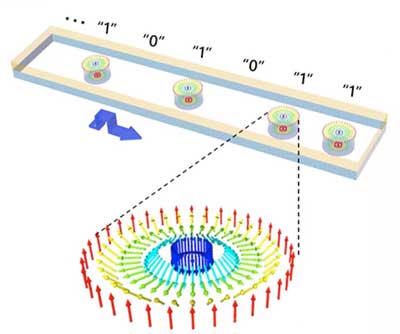 Researchers have, for the first time, successfully demonstrated a formation and current-induced motion of synthetic antiferromagnetic magnetic skyrmions. The established findings are expected to pave the way towards new functional information processing and storage technologies.
Researchers have, for the first time, successfully demonstrated a formation and current-induced motion of synthetic antiferromagnetic magnetic skyrmions. The established findings are expected to pave the way towards new functional information processing and storage technologies.
Subscribe to:
Posts (Atom)
